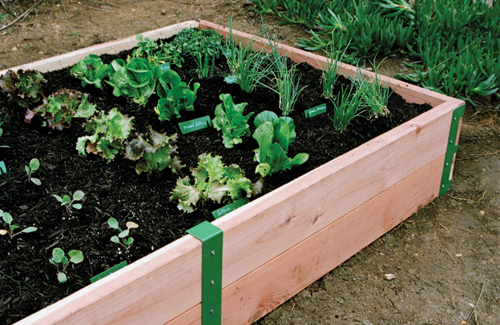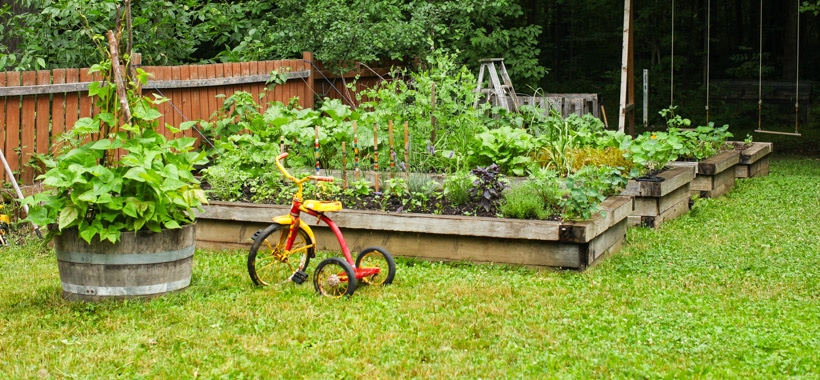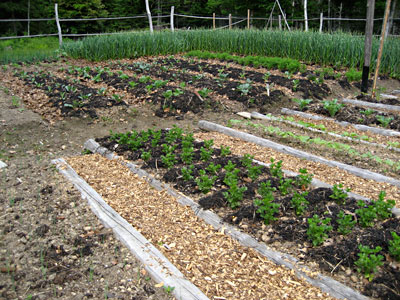Top Crops for a Thriving Homestead Gardening Setup
Top Crops for a Thriving Homestead Gardening Setup
Blog Article
Uncover the Tricks to Producing a Efficient and attractive Horticulture Space
Developing a productive and attractive horticulture space is not merely an issue of planting vegetables and blossoms; it calls for a tactical strategy that encompasses numerous critical elements. From selecting the right location based on sunshine and soil type to attentively designing your format and picking suitable plants, each decision plays a crucial function in the success of your yard.
Selecting the Right Area
Choosing the suitable location for your yard is vital to its success and overall visual appeal. The very first step in this procedure entails analyzing sunlight direct exposure, as most plants need a minimum of 6 hours of straight sunlight daily (Homestead Gardening). A south-facing garden usually obtains one of the most light, while shaded areas can restrain growth and blooming
Furthermore, take into consideration dirt high quality and drainage. Well-draining dirt is crucial to protect against waterlogged origins, which can cause plant conditions. Conducting a soil test can offer beneficial details pertaining to pH degrees and vitamins and mineral material, allowing you to modify the dirt appropriately.
Furthermore, distance to water sources is another aspect to weigh - Homestead Gardening. Having simple access to a pipe or irrigation system can streamline the watering procedure and motivate regular plant care. Wind security is likewise important; placing your garden near structures, such as fencings or walls, can shield it from harsh winds that may damage fragile plants
Lastly, think about accessibility for upkeep and harvesting. A well-placed yard permits convenient accessibility, making certain that you can easily often tend to your plants without creating excessive stress and anxiety or disruption. Thoughtful place choice lays the foundation for a thriving yard.
Choosing Plants Carefully
When picking plants for your garden, it's vital to consider factors such as climate, dirt conditions, and individual preferences to guarantee a productive and harmonious area. An extensive understanding of your neighborhood climate will certainly guide you in selecting plants that prosper in your specific environment. Choosing drought-resistant ranges is useful in arid areas, while moisture-loving species might be more proper for locations with high rains.
Soil conditions are equally important; carrying out a soil examination can reveal pH levels and nutrient content, permitting you to choose plants that will certainly grow. Indigenous plants are often an excellent selection, as they are normally well-adapted to neighborhood soil types and call for less upkeep.
Reflect on your individual choices-- selecting plants that resonate with your visual preferences will certainly boost your satisfaction and commitment to maintaining your garden. By very carefully assessing these aspects, you can produce a thriving and varied plant choice that boosts your horticulture experience.
Creating Your Garden Layout
With a thoughtfully picked plant selection in hand, the next step is to develop a yard format that optimizes both beauty and performance. Begin by evaluating the available area, thinking about variables such as sunshine, shade, and wind patterns. A well-planned design must include various zones, consisting of locations for planting, pathways, and perhaps seating.
Begin with larger plants or prime focus, such as trees or high perennials, put tactically to create aesthetic interest. Layer smaller sized plants ahead to enhance depth and structure. Consider the growth habits of your picked plants; taller varieties must be placed at the back or facility of beds, while shorter ones can line the edges.
Integrating paths not only promotes accessibility for maintenance yet also welcomes exploration. Use materials that enhance the yard's total visual, whether gravel, wood, or stone chips.
Furthermore, think of seasonal adjustments and how your layout will certainly look throughout the year. Including evergreens together with seasonal blossoms can guarantee year-round appeal. Inevitably, a properly designed yard format integrates the natural elegance of plants with functional factors to consider, causing an area that is both inviting and productive.
Enhancing Soil Health And Wellness

To boost soil health, start by performing a dirt test to examine news pH degrees, vitamins and mineral content, and soil texture. Integrate organic issue such as compost, well-rotted manure, or fallen leave mold to improve soil structure, water retention, and microbial activity.
Mulching is an additional effective technique; it not only preserves dampness but likewise reduces weeds and slowly enriches the soil as it breaks down. Staying clear of excessive husbandry is essential, as it can interrupt dirt framework and harm beneficial organisms. Instead, adopt no-till or very little tillage methods to keep dirt stability.

Maintaining Your Yard Effectively
A well-kept garden provides pride and productivity, requiring consistent attention to guarantee that plants prosper and the landscape remains welcoming. Reliable yard maintenance includes several crucial techniques that enhance the health of your plants and the overall visual of your room.
Routine watering is important; however, it is essential to tailor your watering routine based upon the particular needs of your plants and local environment problems. Mulching can assist preserve dampness, suppress weeds, and regulate soil temperature. Prompt weeding avoids competitors for resources and nutrients, guaranteeing that your plants thrive.
Pruning is an additional vital task. It urges healthy and balanced growth, eliminates dead or unhealthy branches, and forms plants to maintain an appealing framework. Furthermore, checking for insects and conditions is crucial; early discovery and treatment can conserve your plants from significant damages.
Fertilizing should be carried out thoughtfully, utilizing organic alternatives whenever possible to advertise long-lasting dirt wellness. Finally, seasonal jobs such as growing, dividing perennials, and preparing for winter season will certainly guarantee your yard continues to be dynamic year-round. By complying with informative post these practices diligently, you can grow a garden that is both productive and attractive.
Final Thought
Finally, the production of a these details beautiful and effective gardening space requires mindful consideration of numerous crucial elements. Picking an ideal area with sufficient sunlight, selecting suitable plants, creating a cosmetically pleasing layout, boosting dirt health and wellness, and making certain regular maintenance are necessary elements. By integrating these techniques, one can cultivate a growing yard that not only improves the landscape but also advertises environmental balance and sustainability. Such an approach inevitably causes a satisfying horticulture experience.
From picking the right location based on sunlight and soil type to attentively creating your layout and choosing appropriate plants, each choice plays a pivotal role in the success of your yard. Well-draining dirt is necessary to avoid waterlogged origins, which can lead to plant diseases.When choosing plants for your yard, it's necessary to consider elements such as climate, dirt problems, and individual preferences to guarantee a effective and harmonious space. Inevitably, a well-designed yard design integrates the natural beauty of plants with useful factors to consider, resulting in a room that is both welcoming and productive.

Report this page